Fleurs du Mal Magazine


Or see the index
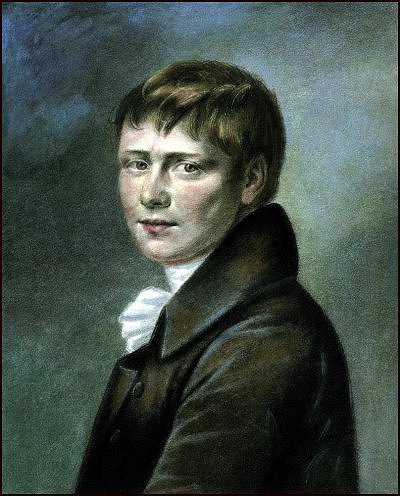
Heinrich von Kleist
(1777-1811)
Der Engel am Grabe des Herrn
Als still und kalt mit sieben Todeswunden
Der Herr in seinem Grabe lag; das Grab
Als sollt’ es zehn lebend’ge Riesen fesseln,
In eine Felskluft schmetternd eingehauen:
Gewälzet mit der Männer Kraft, verschloß
Ein Sandstein, der Bestechung taub, die Türe;
Rings war des Landvogts Siegel aufgedrückt:
Es hätte der Gedanke selber nicht
Der Höhle unbemerkt entschlüpfen können;
Und gleichwohl noch, als ob zu fürchten sei,
Es könn’ auch der Granitblock sich bekehren,
Ging eine Schar von Hütern auf und ab
Und starrte nach des Siegels Bildern hin.
Da kamen bei des Morgens Strahl,
Des ew’gen Glaubens voll, die drei Marien her,
Zu sehn, ob Jesus noch darinnen sei;
Denn er, versprochen hatt’ er ihnen,
Er werd’ am dritten Tage auferstehn.
Da nun die Fraun, die gläubigen, sich nahten
Der Grabeshöhle: was erblickten sie?
Die Hüter, die das Grab bewachen sollten,
Gestürzt, das Angesicht in Staub,
Wie Tote um den Felsen lagen sie;
Der Stein war weit hinweggewälzt vom Eingang;
Und auf dem Rande saß, das Flügelpaar noch regend,
Ein Engel, wie der Blitz erscheint,
Und sein Gewand so weiß wie junger Schnee.
Da stürzten sie, wie Leichen, selbst getroffen
Zu Boden hin und fühlten sich wie Staub
Und meinten gleich im Glanze zu vergehn;
Doch er, er sprach, der Cherub: »Fürchtet nicht!
Ihr suchet Jesum, den Gekreuzigten –
Der aber ist nicht hier, er ist erstanden;
Kommt her und schaut die öde Stätte an!«
Und fuhr, als sie mit hocherhobnen Händen
Sprachlos die Grabesstätte leer erschaut,
In seiner hehren Milde also fort:
»Geht hin, ihr Fraun, und kündigt es nunmehr
Den Jüngern an, die er sich auserkoren,
Daß sie es allen Erdenvölkern lehren
Und tun also, wie er getan!« – und schwand.
Heinrich von Kleist poetry
fleursdumal.nl magazine
More in: Archive K-L, Heinrich von Kleist, Kleist, Heinrich von
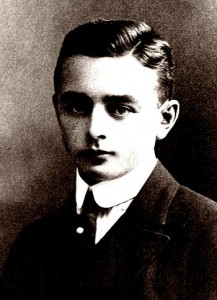
Georg Heym
(1887-1912)
Berlin I
Beteerte Fässer rollten von den Schwellen
Der dunklen Speicher auf die hohen Kähne.
Die Schlepper zogen an. Des Rauches Mähne
Hing rußig nieder auf die öligen Wellen.
Zwei Dampfer kamen mit Musikkapellen.
Den Schornstein kappten sie am Brückenbogen.
Rauch, Ruß, Gestank lag auf den schmutzigen Wogen
Der Gerbereien mit den braunen Fellen.
In allen Brücken, drunter uns die Zille
Hindurchgebracht, ertönten die Signale
Gleichwie in Trommeln wachsend in der Stille.
Wir ließen los und trieben im Kanale
An Gärten langsam hin. In dem Idylle
Sahn wir der Riesenschlote Nachtfanale.
Berlin II
Der hohe Straßenrand, auf dem wir lagen,
War weiß von Staub. Wir sahen in der Enge
Unzählig: Menschenströme und Gedränge,
Und sahn die Weltstadt fern im Abend ragen.
Die vollen Kremser fuhren durch die Menge,
Papierne Fähnchen waren drangeschlagen.
Die Omnibusse, voll Verdeck und Wagen.
Automobile, Rauch und Huppenklänge.
Dem Riesensteinmeer zu. Doch westlich sahn
Wir an der langen Straße Baum an Baum,
Der blätterlosen Kronen Filigran.
Der Sonnenball hing groß am Himmelssaum.
Und rote Strahlen schoß des Abends Bahn.
Auf allen Köpfen lag des Lichtes Traum.
Berlin III
Schornsteine stehn in großem Zwischenraum
Im Wintertag, und tragen seine Last,
Des schwarzen Himmels dunkelnden Palast.
Wie goldne Stufe brennt sein niedrer Saum.
Fern zwischen kahlen Bäumen, manchem Haus,
Zäunen und Schuppen, wo die Weltstadt ebbt,
Und auf vereisten Schienen mühsam schleppt
Ein langer Güterzug sich schwer hinaus.
Ein Armenkirchhof ragt, schwarz, Stein an Stein,
Die Toten schaun den roten Untergang
Aus ihrem Loch. Er schmeckt wie starker Wein.
Sie sitzen strickend an der Wand entlang,
Mützen aus Ruß dem nackten Schläfenbein,
Zur Marseillaise, dem alten Sturmgesang.
Georg Heym poetry
fleursdumal.nl magazine
More in: Archive G-H, Dada, Georg Heym, Heym, Georg
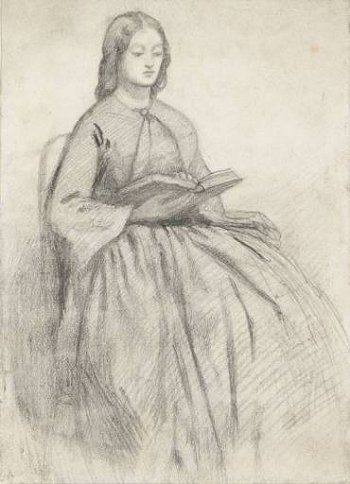
Elizabeth (Lizzie) Siddal
(1829-1862)
Gone
To touch the glove upon her tender hand,
To watch the jewel sparkle in her ring,
Lifted my heart into a sudden song
As when the wild birds sing.
To touch her shadow on the sunny grass,
To break her pathway through the darkened wood,
Filled all my life with trembling and tears
And silence where I stood.
I watch the shadows gather round my heart,
I live to know that she is gone
Gone gone for ever, like the tender dove
That left the Ark alone.
Elizabeth (Lizzie) Siddal poems
fleursdumal.nl magazine
More in: Archive S-T, Lizzy Siddal, Siddal, Lizzy
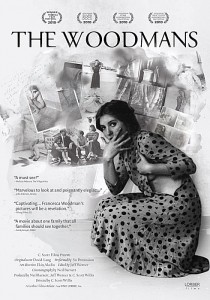
Avro Close Up
Francesca Woodman – fotografe
Documentaire
– Dinsdag 10 april 2012 – N2 23:00 – 00:00
– Zondag 15 april 2012 – N2 17:05 – 18:05
fleursdumal.nl magazine
More in: Art & Literature News, Francesca Woodman, Francesca Woodman
Avro Close Up
Francesca Woodman – fotografe
Documentaire
– Dinsdag 10 april 2012 – 23:00 – 00:00
– Zondag 15 april 2012 – 17:05 – 18:05
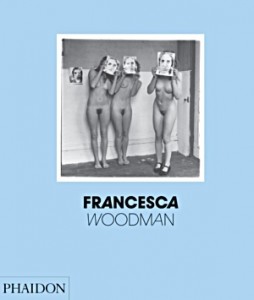 Nadat de zeer talentvolle Amerikaanse fotografe Sarah Woodman op 22-jarige leeftijd zelfmoord pleegde, kostte het haar ouders en broer – eveneens kunstenaars – jaren om in het reine te komen met haar dood. Ondertussen vergaarde Woodman postuum roem met haar mysterieuze zwart-wit foto’s van naakte vrouwen in verlaten interieurs, waarop zij zelf vaak prominent figureerde.
Nadat de zeer talentvolle Amerikaanse fotografe Sarah Woodman op 22-jarige leeftijd zelfmoord pleegde, kostte het haar ouders en broer – eveneens kunstenaars – jaren om in het reine te komen met haar dood. Ondertussen vergaarde Woodman postuum roem met haar mysterieuze zwart-wit foto’s van naakte vrouwen in verlaten interieurs, waarop zij zelf vaak prominent figureerde.
Francesca Woodman (1958-1981) groeide op in een gezin van zeer gedreven kunstenaars. Haar moeder, Betty Woodman, was ceramiste en haar vader, George Woodman, schilderde. Francesca bracht de zomers van haar jeugd met haar ouders en broer door in Florence, waar ze als klein meisje in musea ronddwaalde en haar schetsboeken vulde met tekeningen van vrouwen in formele kleding.
De ouders van Francesca leefden volgens het principe ‘kunst is keihard werken’ maar desondanks stonden ze verbaasd over de ambitie van hun opgroeiende dochter die haar ouders in doelgerichtheid en vastberadenheid overtrof. Als zeventienjarige werd Woodman verliefd op de fotografie en al snel ontwikkelde ze een complexe, volwassen stijl waarbij ze als haar eigen model figureerde in mysterieuze taferelen die zich afspeelden in verlaten en vervallen interieurs. In de jaren die volgden verhuisde ze naar New York waar ze in de kunstwereld als veelbelovend werd gezien, maar een doorbraak liet op zich wachten. Ondertussen worstelde Francesca met depressies, een strijd die haar zo zwaar viel dat ze in 1981 een einde maakte aan haar leven.
De documentaire ‘Francesca Woodman – Fotografe’ schetst een beeld van het uitzonderlijke talent van Francesca Woodman, van wie het werk tegenwoordig in musea hangt. De film laat ook zien hoe haar ouders en haar broer het vroegtijdig overlijden van hun dochter en zus verwerkt hebben en welke rol hun eigen kunst gespeeld heeft in een lang en pijnlijk proces.
Regie: C. Scott Willis
Een productie van C. Scott Films
Close Up: Francesca Woodman – Fotografe:
10 april 2012, 23.00 uur, Ned. 2.
Herhaling: Zondag 15 april , 17.05 uur, Ned. 2.
fleursdumal.nl magazine
More in: Art & Literature News, Francesca Woodman, Francesca Woodman
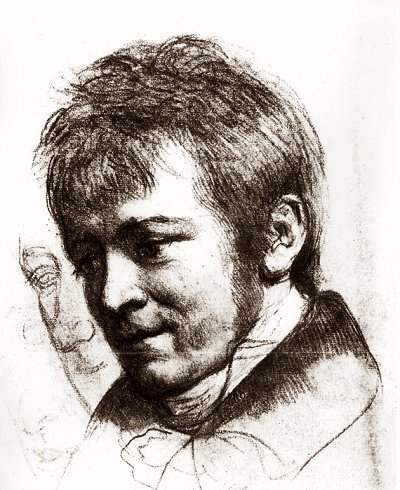
Heinrich von Kleist
(1777-1811)
Der höhere Friede
Wenn sich auf des Krieges Donnerwagen
Menschen waffnen, auf der Zwietracht Ruf,
Menschen, die im Busen Herzen tragen,
Herzen, die der Gott der Liebe schuf:
Denk´ich, können sie doch mir nichts rauben,
Nicht den Frieden, der sich selbst bewährt,
Nicht die Unschuld, nicht an Gott den Glauben,
Der dem Hasse wie dem Schrecken wehrt;
Nicht des Ahorns dunkelm Schatten wehren,
Daß er mich im Weizenfeld erquickt,
Und das Lied der Nachtigall nicht stören,
Die den stillen Busen mir entzückt.
Heinrich von Kleist poetry
fleursdumal.nl magazine
More in: Archive K-L, Heinrich von Kleist, Kleist, Heinrich von
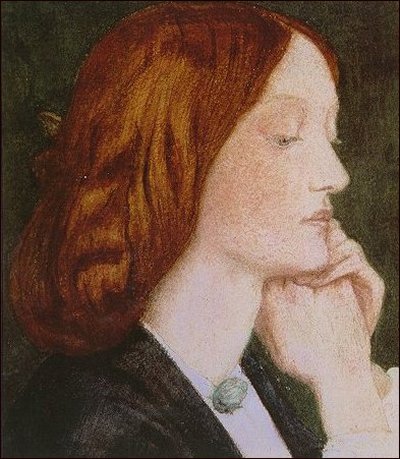
Elizabeth (Lizzie) Siddal
(1829-1862)
Fragment of a Ballad
Many a mile over land and sea
Unsummoned my love returned to me;
I remember not the words he said
But only the trees moaning overhead.
And he came ready to take and bear
The cross I had carried for many a year,
But words came slowly one by one
From frozen lips shut still and dumb.
How sounded my words so still and slow
To the great strong heart that loved me so,
Who came to save me from pain and wrong
And to comfort me with his love so strong?
I felt the wind strike chill and cold
And vapours rise from the red-brown mould;
I felt the spell that held my breath
Bending me down to a living death.
Elizabeth (Lizzie) Siddal poems
fleursdumal.nl magazine
More in: Archive S-T, Lizzy Siddal, Siddal, Lizzy
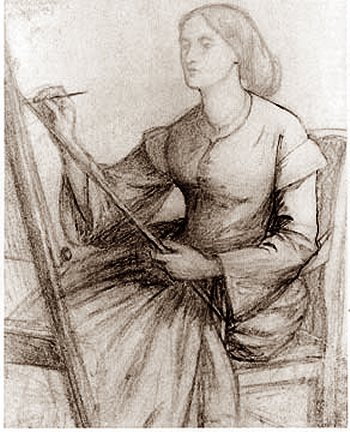
Elizabeth (Lizzie) Siddal
(1829-1862)
Shepherd Turned Sailor
Now Christ ye save yon bonny shepherd
Sailing on the sea;
Ten thousand souls are sailing there
But they belong to Thee.
If he is lost then all is lost
And all is dead to me.
My love should have a grey head-stonee
And green moss at his feet
And clinging grass above his breast
Whereon his lambs could bleat,
And I should know the span of earth
Where some day I might sleep.
Elizabeth (Lizzie) Siddal poems
fleursdumal.nl magazine
More in: Archive S-T, Lizzy Siddal, Siddal, Lizzy
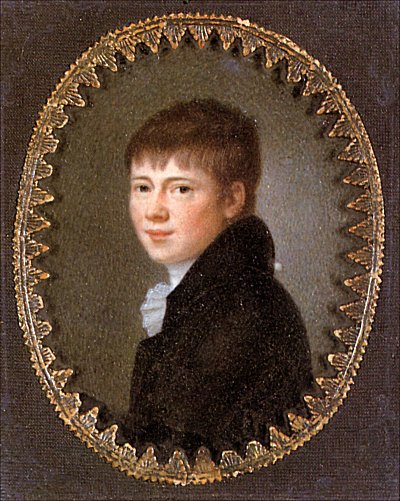
Heinrich von Kleist
(1777-1811)
Jünglingsklage
Winter, so weichst du,
Lieblicher Greis,
Der die Gefühle
Ruhigt zu Eis.
Nun unter Frühlings
Ueppigem Hauch
Schmelzen die Ströme –
Busen, du auch!
Heinrich von Kleist poetry
fleursdumal.nl magazine
More in: Archive K-L, Heinrich von Kleist, Kleist, Heinrich von
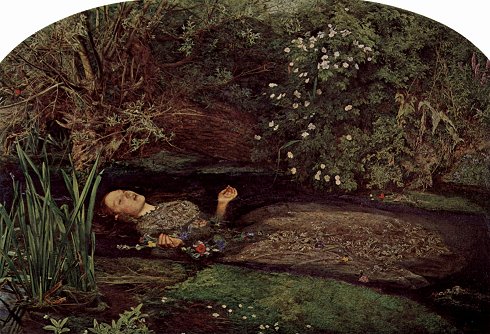
Special event at Highgate Cemetery London
for the 150th anniversary of Lizzie Siddal’s death
February 11th is the 150th anniversary of Lizzie’s death. To commemorate this, Highgate Cemetery (Lizzie’s final resting place) is having a Talk at the cemetery on that day by Lucinda Hawksley, author of Lizzie Siddal: Face of the Pre-Raphaelites.
From the Highgate Cemetery website: This is a unique and historic occasion as it is in commemoration of the 150th anniversary of Lizzie Siddal’s death: she died on February 11th 1862 and was buried at Highgate Cemetery six days later.
Lizzie Siddal was a nineteenth-century phenomenon: a working-class girl whose beauty made her the Pre-Raphaelite movement’s most celebrated, iconic face. Dante Rossetti, founder and leading light of the movement, painted and drew her obsessively a thousand times. She soon became a poet and artist in her own right.
However, as his lover and finally his wife, Lizzie’s relationship with Rossetti was blighted by his infidelities and neglect. In despair, Lizzie resorted to laudanum to numb her senses. In 1862 she took an overdose and left a suicide note.
Lucinda’s illustrated and vivid account of Lizzie’s meteoric but brief career and her tortured relationship breathes new life into the images of Lizzie frozen in time in galleries around the world.
The talk commences at 6.30 and will last around an hour. Booking: is in advance by email only at events@highgate-cemetery.org. Tickets: cost £10 each (£8 for students) including refreshments and nibbles. Space is limited so early booking is advised.

About Elizabeth Siddal
Elizabeth Siddal (July 25, 1829 – February 11, 1862)
While working in a millinery shop, Lizzie was discovered by the artist Walter Deverell who painted her as Viola in his depiction of Shakespeare’s Twelfth Night. Lizzie went on to model for other Pre-Raphaelite artists and is most commonly recognized as Ophelia in the painting by John Everett Millais, but was the charismatic Dante Gabriel Rossetti who not only drew and painted her obsessively, but encouraged Lizzie in her own artwork and poetry. Their relationship was intense and rocky, with an engagement that lasted on and off for a decade. Sadly, their marriage was short. The couple suffered a stillborn child and Lizzie was seriously addicted to Laudanum. She died in 1862 due to an overdose. The rest of Lizzie’s tale is eerily famous for its gothic Victorian morbidity: Rossetti, in his grief, buried his only manuscript of his poems with Lizzie. The poems, nestled in her coffin amidst her famous red hair, haunted him. Seven years later, he had her coffin exhumed in order to retrieve the poems for publication. The story was spread that Lizzie was still in beautiful, pristine condition and that her flaming hair had continued to grow after death, filling the coffin. This, of course, is a biological impossibility. Cellular growth does not occur after death, but the tale has added to Lizzie’s legend and continues to capture the interest of Pre-Raphaelite and Lizzie Siddal enthusiasts.
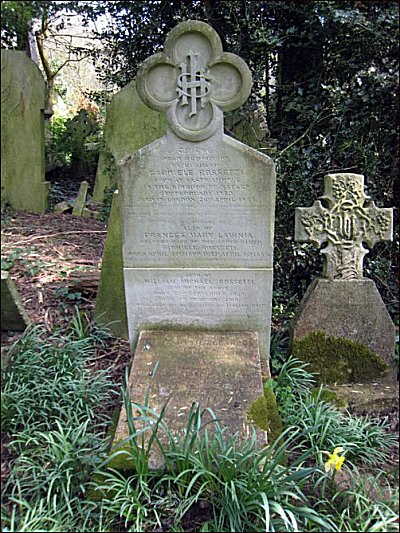
The story of Lizzie’s life is punctuated with dramatic episodes such as falling ill as a result of modeling as Ophelia,, the tales of Rossetti’s dalliances, and her grief at the loss of their stillborn daughter. Our modern society is much more aware and educated than the Victorians regarding mental health issues. Unfortunately for Elizabeth Siddal, she lived in a time where addiction was a taboo subject and little was known about post-partum depression. Lizzie lived within a cycle of illness, addiction and grief with no resources available to her. And although she did have a creative outlet while most women were denied modes of self expression, Lizzie was never able to move beyond the addiction that claimed her life.
Source: website LizzieSiddal.com
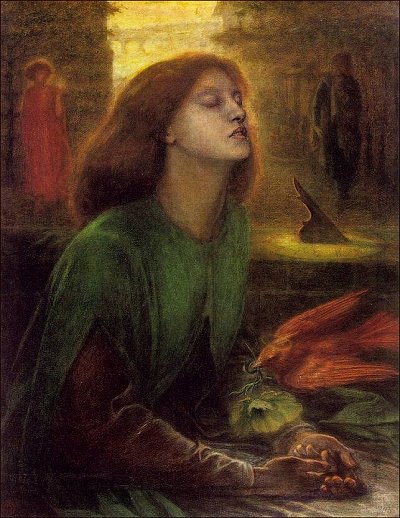
fleursdumal.nl magazine
More in: Galerie des Morts, Lizzy Siddal, Siddal, Lizzy
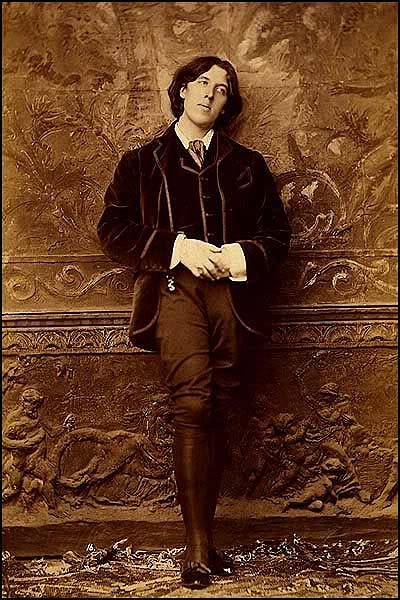
Oscar Wilde
(1854-1900)
The Grave of Keats
(sonnet)
Rid of the world’s injustice, and his pain,
He rests at last beneath God’s veil of blue:
Taken from life when life and love were new
The youngest of the martyrs here is lain,
Fair as Sebastian, and as early slain.
No cypress shades his grave, no funeral yew,
But gentle violets weeping with the dew
Weave on his bones an ever-blossoming chain.
O proudest heart that broke for misery!
O sweetest lips since those of Mitylene!
O poet-painter of our English land!
Thy name was writ in water – it shall stand:
And tears like mine will keep thy memory green,
As Isabella did her Basil tree.
Rome
Oscar Wilde
Het graf van Keats
(sonnet)
In de nieuwe vertaling van Cornelis W. Schoneveld
Van ‘s werelds onrecht en zijn pijn bevrijd,
Rust hij op ‘t laatst onder God’s hemelbaan:
Uit liefde en leven, nieuw nog, heengegaan
Ligt hier de jongste lijder neergevlijd,
Schoon als Sebastiaan, even jong ook dood.
Hier geeft cipres noch taxus schaduw af,
Maar waar viooltjes wenen op zijn graf
Is zijn gebeente nooit van bloei ontbloot.
O hart vol trots dat brak door hoe het leed!
O stem die ‘t zoetst sinds Mytylene’s is!
O schilder-dichter van ons Engeland!
Je schreef je naam in water-hij houdt stand:
En ook mijn traan steunt jouw gedachtenis,
Zoals Isabella’s balsemkruid dat deed.
Rome
VALLEND BLOEMBLAD
Verzameling van 90 korte gedichten van OSCAR WILDE
Vertaald door Cornelis W. Schoneveld
tweetalige uitgave, 2011
ongepubliceerd
fleursdumal.nl nagazine
More in: John Keats, Keats, John, Wilde, Wilde, Oscar
Amy Winehouse new release
Lioness, Hidden Treasures
Just released: a 12 track collection of previously unreleased tracks of Amy Winehouse, alternate versions of existing classics as well as a couple of brand new Amy compositions. It has been compiled by long-time musical partners Salaam Remi and Mark Ronson in close association with Amy’s family, management and record label Island Records. “Lioness : Hidden Treasures” proves a fitting tribute to the artist, the talent and the woman and serves as a reminder of Amy’s extraordinary powers as a songwriter, a singer and an interpreter of classics.
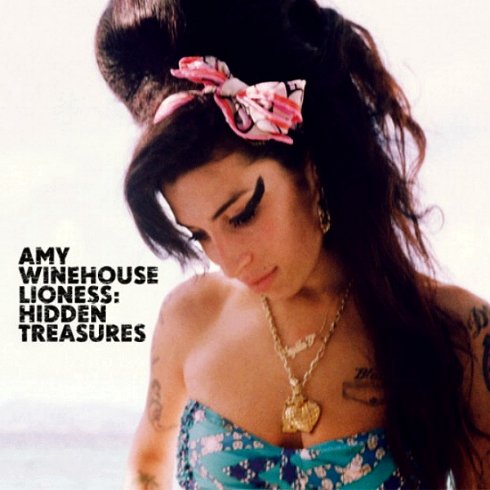
Tracklisting:
1. Our Day Will Come
2. Between The Cheats
3. Tears Dry (Original Version)
4. Will You Still Love Me Tomorrow? (2011)
5. Like Smoke Feat. Nas
6. Valerie (’68 Version)
7. Girl From Ipanema
8. Half Time
9. Wake Up Alone (Original Recording)
10. Best Friends, Right?
11. Body And Soul With Tony Bennett
12. A Song For You
Amy Winehouse: Lioness Hidden Treasures album comes with an exclusive poster. £1 of every sale in UK/Eire goes to the Amy Winehouse Foundation, set up in Amy’s memory to support charitable activities that can provide help, support or care for young people, especially those who are in need by reason of ill health, disability, financial disadvantage or addiction.
Amy Winehouse (14 September 1983 – 23 July 2011)
Amy Winehouse released her critically acclaimed debut album, Frank, in 2003, an album that introduced a truly singular talent and earned. the then 20 year-old a nomination for the prestigious Mercury Music Prize. It was however in 2006, with the release of the universally lauded Back to Black, that Amy became widely recognised, by the critics and public alike, as arguably the greatest British artist to emerge in generations. Back To Black received an astonishing six Grammy Award nominations winning five, tying the then record for the most wins by a female artist in a single night. Amy became the first British female to win five Grammys, including three of the “Big Four”: Best New Artist, Record of the Year and Song of the Year.
On 14 February 2007, she won a BRIT Award for Best British Female Artist and was also nominated for Best British Album. She won the Ivor Novello Award three times, one in 2004 for Best Contemporary Song (musically and lyrically) for “Stronger Than Me”, one in 2007 for Best Contemporary Song for “Rehab”, and one in 2008 for Best Song Musically and Lyrically for “Love Is a Losing Game”, among other distinctions. In August 2011 her album Back to Black became the UK’s best selling album of the 21st century.
fleursdumal.nl magazine
More in: Amy Winehouse, Amy Winehouse, Exhibition Archive
Thank you for reading Fleurs du Mal - magazine for art & literature